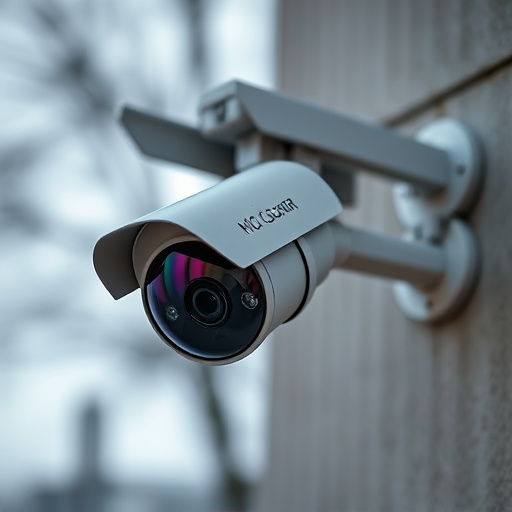Solar-powered dummy camera installations offer an eco-friendly, cost-effective security solution for homes and businesses. These realistic replicas deter criminals with their discreet design, strategic placement options (entry points, rooftops), and silent operation powered by solar energy. Crafted from durable materials like stainless steel or robust plastic, they withstand environmental conditions. Strategic positioning ensures clear lines of sight, while regular maintenance keeps them performing optimally. Remote monitoring capabilities enhance convenience, making these cameras a practical, long-lasting security tool.
In today’s digital age, enhancing home security has become paramount. One effective solution gaining traction is the Solar Powered Dummy Camera Installation. This article delves into the art of creating realistic security camera shells, offering a comprehensive guide on design, material selection, and deployment strategies.
We explore key considerations to ensure these dummy cameras blend seamlessly into any environment, providing an affordable and aesthetically pleasing security boost without compromising durability.
- Understanding Solar Powered Dummy Camera Installation
- Key Design Considerations for Realistic Shells
- Material Selection and Durability
- Placement and Maintenance Strategies
Understanding Solar Powered Dummy Camera Installation
Solar-powered dummy camera installations offer a subtle yet effective deterrent for potential intruders. These devices mimic real security cameras, providing visual reassurance to homeowners and businesses alike. The key advantage lies in their energy efficiency; harnessing solar power allows them to operate quietly and sustainably, with no visible cables or power sources. This unassuming design makes them an ideal choice for discreetly monitoring entry points, rooftops, or areas where a permanent wire connection might be impractical.
By installing these dummy cameras, property owners can benefit from enhanced security without the complexity of complex wiring or ongoing electricity costs. Their low-profile nature ensures they blend seamlessly into various environments, from residential neighborhoods to commercial complexes. This strategic placement can significantly deter criminals while providing peace of mind, making solar-powered dummy camera installations a valuable addition to any comprehensive security strategy.
Key Design Considerations for Realistic Shells
When designing realistic security camera shells, several key considerations come into play for an effective Solar Powered Dummy Camera Installation. Firstly, the shell should closely mimic the appearance of a genuine surveillance camera to deter potential thieves and ensure the system’s longevity. This includes replicating the physical dimensions, shape, and material finish of real cameras, making it challenging to distinguish from the original.
Secondly, the design should prioritize weatherproofing to withstand various environmental conditions. As these dummy cameras are often exposed outdoors, they must be built to resist water, dust, and extreme temperatures. Incorporating durable materials and seals can safeguard the internal components, ensuring their functionality over an extended period.
Material Selection and Durability
When designing a realistic security camera shell, material selection is paramount for both aesthetic and durability reasons. Opting for high-quality, weatherproof materials like stainless steel or robust plastic ensures that the dummy camera installation can withstand various environmental conditions, from harsh sunlight to heavy rain. These materials also offer corrosion resistance, crucial for outdoor applications, maintaining the camera’s structural integrity over time.
Durability is enhanced through additional features such as UV protection coatings and impact-resistant designs. Given the reliance on Solar Powered Dummy Camera Installation, incorporating durable materials ensures the system continues to function efficiently without succumbing to wear and tear. This long-lasting design not only provides peace of mind but also reduces maintenance requirements, making it a practical and cost-effective security solution.
Placement and Maintenance Strategies
Strategic placement is key in maximizing the effectiveness of security camera systems, especially those utilizing solar-powered dummy cameras. These devices are designed to blend seamlessly into their surroundings, acting as a deterrent and providing a sense of security. Typically, they should be installed in areas with clear lines of sight, such as entry points, windows, and common areas, where potential intruders might approach. High visibility discourages malicious activity and serves as a powerful visual reminder of surveillance.
Regular maintenance is equally vital for optimal performance. Solar-powered cameras require minimal upkeep compared to wired alternatives, but periodic checks are essential. This includes ensuring the solar panel faces the sun for maximum energy absorption, cleaning the lens to maintain image quality, and verifying that all connections are secure. Many modern models also feature remote monitoring capabilities, allowing users to keep an eye on their camera’s health and performance from the comfort of their homes or offices.
A realistic security camera shell design is not just about aesthetics; it’s a crucial component of effective surveillance strategies, especially for solar-powered dummy cameras. By carefully considering material selection, durability, and strategic placement alongside the key design elements discussed in this article, property owners can maximize the deterrence value of these devices while ensuring they blend seamlessly into their environments. Remember, a well-designed shell enhances the overall effectiveness of Solar Powered Dummy Camera Installation, making it a valuable investment for enhanced security.
